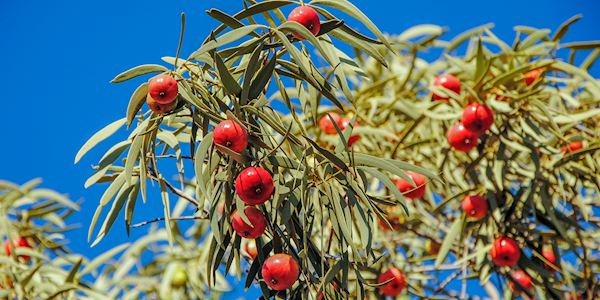“Fruits are healthy” is a statement so obvious that one may call it a truism. However, do we really know why is that? Quite obviously many of us may respond including expressions such as “vitamins” or “decreasing risk of diseases” and without any doubt that would be correct, yet what if we were to take a more profound glance at the topic?
As obvious as it may seem, the beneficial impact of fruits depends on their chemical components. However, it doesn’t mean that in this field it would be enough to simply enlist the vitamins which a certain fruit contains, due to the fact that the essence of this issue is about more complex chemical compounds and their amount in each case. At this point we may also add that the level of a certain substance is linked not only to the type of fruit itself, but can be affected also by how mature the fruit is or how it was stored. It is quite an important issue for instance when it comes to Vitamin C. [2]
Dr Izabela Konczak focuses her research on analysing the chemical compounds of Australian fruits while focusing on those ingredients which positively affect our organism. Sounds exotic? Well, in a way it is, nevertheless the outcomes quite often turn out very interesting, especially when compared with plants from different parts of the world.
As an example we may set a commonly known blueberry. It contains phenolic compounds, which are a part of a wider group of phytochemicals that are chemical compounds produced by plants in order to, for instance, protect themselves from fungi or bacteria. [2] Phenolic compounds are a desirable ingredient of food because they have a positive impact on digestion and can be quite easily absorbed. They may be found not only in well-known fruits, but also in Kakadu plum, Davidson plum, quandong or riberry. Moreover, the amount of those substances is so high that they can considerably improve functioning of our organism. [2]
Lutein is another ingredient that occurs abundantly in Australian fruits. It has a beneficial impact on our eyes and prevents its age-related degeneration. [4] This chemical compound may be found for example in Australian desert lime, as well as in Kakadu plum and Davidson plum.
Further substance analysed by Dr Izabela Konczak is vitamin C. It appears to be richly distributed within Australian flora. For instance, Australian desert lime contains twice as much of it as Californian oranges do or even five times more in comparison with fresh tangerines. When it comes to riberry, its vitamin C level is as high as this of wild limes. [2]
Moreover, Australian fruits are a rich source of minerals, which are indispensable for the proper functioning of our body due to the fact that they regulate physiological processes. Iron, for example, is a key ingredient of haemoglobin in red cells that transport oxygen from lungs to different parts of the body. [3] Quandong and Lemon aspen are a notable source of this element. First of them also contains large amounts of potassium and sodium.
Dr Konczak underscores the fact that introducing those fruits to our daily diet may enrich our organisms in various substances and considerably improve our health.
In order to gain further knowledge, we encourage to familiarize yourself with research of Dr Konczak, who co-created complex and yet pellucid paper “Health
benefits of Australian native foods – An evaluation of health-enhancing
compounds” concerning health benefits related to Australian fruits. Those who are interested in the chemical side of the issue are encouraged to read Cherikoff & Konczak, “An overview of the health attributes of wild foods”.
Bibliography:
- Konczak et al., Health benefits of Australian native foods – An evaluation of health-enhancing compounds, Rural Industries Res. Dev. Corporation, 1-41, 2009 (dostęp na 17.12.2022) https://www.researchgate.net/publication/285127462_Health_benefits_of_australian_native_foods_-_An_evaluation_of_health-enhancing_compounds
- Cherikoff & Konczak, An overview of the health attributes of wild foods, 2015 (dostęp na 17.12.2022.) https://www.researchgate.net/publication/281444987_An_overview_of_the_health_attributes_of_wild_foods
- Nowa Encyklopedia Powszechna PWN, Warszawa 1995, tom 2, str. 731
- Health Encyclopedia, Health Center University of Rochester, (dostęp na 17.12.2022) https://www.urmc.rochester.edu/encyclopedia/content.aspx?contenttypeid=19&contentid=Lutein
Filip Kuczyński-Piech



